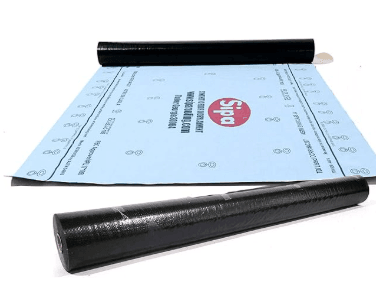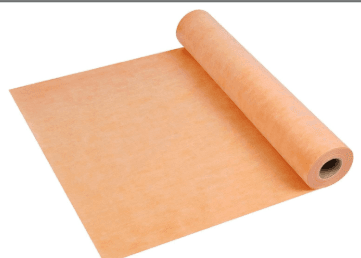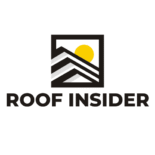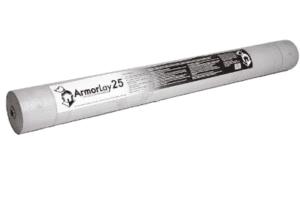Best Waterproof Roof Underlayments and Membranes for 2025
When it comes to roofing and waterproofing projects, choosing the right underlayment is essential. High-quality synthetic roof underlayments and waterproof membranes protect against moisture, UV exposure, and temperature changes. Whether you are roofing a home, installing new tile floors, or creating a waterproof barrier in a bathroom, investing in durable underlayment ensures long-term protection and performance.
In this guide, we highlight three of the best waterproof underlayments for 2025:
- SIPA 100 GSM Synthetic Waterproof Roof Underlayment
- ArmorLay 25 Synthetic Roof Underlayment
- Waterproof Membrane PE Fabric for Floors, Walls, and Roofs
Each product is engineered for strength, flexibility, and ease of installation, making them excellent choices for contractors and DIYers alike.
The Indispensable Role of Roof Underlayments and Membranes
Before diving into the specifics of different materials, it’s essential to understand why roof underlayments and membranes are so critical. They serve multiple vital functions:
- Primary Water Barrier Backup: While your primary roofing material (shingles, tiles, metal) is designed to shed water, strong winds, heavy rains, or ice dams can force water underneath. The underlayment acts as a secondary waterproof or water-resistant barrier, preventing this moisture from reaching the roof deck and the underlying structure of your home.
- Protection During Installation: Underlayment protects the roof deck from weather exposure during the roofing installation process, especially if there are delays in applying the final roof covering.
- Enhanced Durability and Longevity: By creating a barrier against moisture, underlayments help prevent rot, mold, and mildew growth on the roof deck, significantly extending the lifespan of your entire roofing system.
- Improved Energy Efficiency: Some underlayments contribute to the overall thermal performance of your roof, helping to regulate indoor temperatures and potentially reducing energy consumption.
- Meeting Building Codes and Warranties: Many local building codes require specific types of underlayment, and most roofing material manufacturers stipulate the use of approved underlayments for their product warranties to remain valid.
- Preventing Interaction Between Roof Deck and Covering: Underlayment separates the roof deck from the roofing material, preventing any potential chemical reactions or adhesion issues between different materials.
Types of Waterproof Roof Underlayments and Membranes
The market offers a diverse range of underlayment and membrane options, each with its unique properties, advantages, and ideal applications. We’ll explore the most common types, including asphalt-saturated felt, synthetic underlayments, and self-adhering membranes.
1. Asphalt-Saturated Felt (Tar Paper / Roofing Felt)
Asphalt-saturated felt is the traditional workhorse of roof underlayments, having been used for decades. It’s made by saturating a paper or fiberglass mat with asphalt, creating a water-resistant layer.
- Composition: Typically made from recycled paper, wood fibers, or fiberglass mats saturated with asphalt (bitumen).
- Thickness: Commonly available in two weights: #15 felt (lighter) and #30 felt (heavier and more durable). The “pound” designation roughly correlates to the weight per 100 square feet (one roofing square).
- Water Resistance vs. Waterproofing: It’s important to note that felt underlayment is water-resistant rather than truly waterproof. While it sheds water effectively, prolonged exposure to moisture or tears can compromise its integrity.
- Advantages:
- Cost-Effective: Generally the most affordable underlayment option, making it suitable for budget-conscious projects.
- Widely Available: Easy to find at most building supply stores.
- Vapor Permeable: Allows some moisture vapor to pass through, which can be beneficial in certain climates to prevent condensation buildup within the roof system.
- Disadvantages:
- Less Durable: More prone to tearing, cracking, or wrinkling, especially during installation or under extreme temperature fluctuations.
- Heavier and More Cumbersome: Can be more challenging to transport and install compared to lighter synthetic options.
- Limited Lifespan: Its lifespan is typically shorter than synthetic or self-adhering alternatives, often lasting 15-20 years.
- UV Degradation: Can degrade when exposed to UV rays for extended periods, making it less suitable for situations where the roof covering might be delayed.
- Slip Hazard: Can become slippery when wet, posing a safety risk during installation.
2. Synthetic Underlayments
Synthetic underlayments represent a modern advancement in roofing protection, offering superior performance compared to traditional felt. These are typically made from woven or non-woven polypropylene or polyethylene polymers.
- Composition: Manufactured from highly durable polymers like polypropylene or polyethylene. Some may incorporate an extra layer of coarse woven material (scrim) for enhanced traction.
- Key Characteristics: Lightweight, tear-resistant, high strength, and excellent water resistance. Many are designed to be UV-resistant, allowing for longer exposure times during construction.
- Advantages:
- Superior Durability: Highly resistant to tearing, punctures, and mechanical damage, making them more resilient during installation and against harsh weather.
- Lightweight: Significantly lighter than felt, making them easier to transport, handle, and install. This also puts less strain on the roof deck.
- Excellent Water Resistance: Provides a much stronger barrier against water penetration than felt, with some offering near-waterproof qualities.
- UV Resistance: Many synthetic underlayments are treated to resist UV degradation, allowing them to remain exposed to the elements for several months without compromising performance. This is particularly useful for projects with staggered timelines.
- Mold and Fungal Resistance: Polymeric materials are inherently resistant to mold and fungal growth, contributing to a healthier roof system.
- Slip-Resistant Surfaces: Many synthetic underlayments feature specially textured or coated surfaces to provide better traction for installers, improving safety.
- Longer Warranties: Manufacturers often offer extended warranties (e.g., 25-50 years) for synthetic underlayments, reflecting their confidence in the product’s longevity.
- Disadvantages:
- Higher Cost: Generally more expensive than asphalt-saturated felt upfront, though the long-term benefits and durability often justify the investment.
- Can Be Slippery: While many have anti-slip coatings, some smooth synthetic underlayments can still be slippery when wet, requiring careful handling.
- Vapor Permeability: While some are designed to be breathable, many synthetic underlayments act as strong vapor barriers, which can be a disadvantage in climates where trapped moisture needs to escape.
3. Self-Adhering Membranes (Ice and Water Shield)
Self-adhering membranes, often referred to as “ice and water shield” or “peel-and-stick” membranes, offer the highest level of waterproofing protection. They are designed to create a watertight seal directly to the roof deck, often used in vulnerable areas.
- Composition: Typically made from rubberized asphalt or modified bitumen, often with a polyethylene or polyester film on the upper surface for durability and non-skid properties. One side features a strong adhesive, protected by a peel-off release liner.
- Application: Primarily used in critical areas prone to water infiltration, such as:
- Eaves: Essential in cold climates to prevent damage from ice dams, which form when snow melts and refreezes at the colder eaves, causing water to back up under shingles.
- Valleys: Where two roof planes meet, creating a natural channel for water runoff.
- Around Chimneys, Vents, and Skylights: Penetrations in the roof are common points for leaks.
- Low-Slope Roofs: Often used as the primary underlayment for roofs with very low slopes (e.g., 2/12 pitch or less) where water can pool.
- Advantages:
- Superior Waterproofing: Forms a true watertight barrier, preventing water from seeping through, even under hydrostatic pressure from ice dams or standing water.
- Self-Sealing Around Fasteners: The rubberized asphalt material seals around nails and staples used to attach the primary roofing material, further preventing leaks at these penetration points.
- Excellent Adhesion: Bonds directly to the roof deck, creating a continuous, seamless protective layer.
- Flexibility and Crack Bridging: Can accommodate minor structural movements and bridge small cracks in the roof deck without compromising its seal.
- Durability in Extreme Conditions: Highly effective in areas with heavy rainfall, snow, and extreme temperature fluctuations.
- Disadvantages:
- Highest Cost: Self-adhering membranes are the most expensive type of underlayment per square foot.
- Installation Sensitivity: Requires meticulous installation to avoid wrinkles and bubbles, which can compromise its effectiveness. Once adhered, it’s difficult to reposition.
- Temperature Limitations: Some products may have temperature restrictions for installation (e.g., requiring temperatures above a certain threshold for proper adhesion).
4. Breathable Roofing Membranes (BRMs)
While most underlayments focus on preventing water ingress, breathable roofing membranes (sometimes called breather membranes or vapor-permeable underlays) allow moisture vapor to escape from the roof system while still blocking liquid water. This is crucial for preventing condensation issues, especially in well-insulated or new-build properties.
- Composition: Often made from multiple layers of synthetic materials, with a microporous or monolithic film that allows vapor to pass through but not water.
- Functionality: They have a dual purpose: preventing water from entering from the outside and allowing moisture vapor from inside the building (e.g., from cooking, showering, human respiration) to escape.
- Advantages:
- Mitigates Condensation: Crucial for managing moisture within the roof assembly, reducing the risk of mold, mildew, and rot caused by trapped condensation.
- Improved Indoor Air Quality: By allowing moisture to escape, they contribute to a healthier indoor environment.
- Enhanced Thermal Performance: Can work in conjunction with insulation to optimize energy efficiency by preventing moisture buildup that degrades insulation performance.
- Considerations:
- Placement: Typically installed on the outer side of the insulation, while a vapor control layer (VCL) is placed on the inner, warm side.
- Ventilation Requirements: While breathable, some roofs still require adequate air movement above the membrane, especially in cold pitched roofs.
- Cost: Generally more expensive than basic asphalt felt.
Choosing the Best Waterproof Roof Underlayment or Membrane: Key Factors
Selecting the ideal waterproof roof underlayment or membrane involves a careful consideration of several factors specific to your project and environment.
1. Climate and Weather Conditions
Your local climate is arguably the most critical factor.
- Heavy Rainfall or Snow: In regions prone to significant precipitation, superior waterproofing is paramount. Self-adhering membranes (ice and water shields) are highly recommended, especially at eaves to prevent ice dams. Synthetic underlayments also offer excellent water resistance.
- High Humidity: Breathable membranes are beneficial in humid climates to allow trapped moisture to escape and prevent condensation issues.
- Extreme Temperatures: Underlayments must be able to withstand both high heat (without drying out and cracking) and freezing temperatures (without becoming brittle). Synthetic and self-adhering membranes generally perform better in extreme conditions than asphalt felt.
- High Winds: Durable underlayments that resist tearing and blow-off are essential in high-wind zones. Synthetic underlayments, with their high tear strength, are often preferred.
2. Roof Pitch and Slope
The steepness of your roof plays a significant role in water shedding and the type of underlayment required.
- Low-Slope Roofs (e.g., 2/12 pitch or less): These roofs are more susceptible to water pooling. Self-adhering membranes (often multi-layered) are frequently used as the primary waterproofing layer.
- Steep-Slope Roofs: While gravity helps shed water more effectively, underlayment is still crucial for protection against wind-driven rain and ice dams. Synthetic and asphalt-saturated felt are commonly used.
3. Roofing Material Compatibility
Not all underlayments are compatible with every roofing material.
- Asphalt Shingles: Both asphalt-saturated felt and synthetic underlayments are commonly used. Self-adhering membranes are recommended for vulnerable areas.
- Tile Roofs (Clay or Concrete): While tiles provide excellent protection, they are not completely waterproof. Underlayment is crucial to prevent water from seeping through gaps. Synthetic underlayments are often preferred for their durability, resistance to fungal growth, and ability to withstand prolonged exposure if a tile breaks. Self-adhering membranes are also excellent choices for added protection.
- Metal Roofs: Synthetic underlayments are often favored for metal roofs due to their durability, temperature tolerance, and non-corrosive properties. Rubberized asphalt is also a strong contender.
- Wood Shakes/Shingles: Breathable underlayments can be beneficial to allow the wood to dry, preventing rot.
4. Budget Considerations
Cost is always a factor, but it’s important to balance upfront expense with long-term performance and protection.
- Asphalt-Saturated Felt: Most budget-friendly.
- Synthetic Underlayment: Mid-range cost, offering a good balance of performance and value.
- Self-Adhering Membranes: Highest cost, but provide superior waterproofing and often required in specific applications.
Consider the total cost of ownership, including potential repair costs if a cheaper, less effective underlayment fails prematurely. Investing in a high-quality underlayment can save significant money in the long run by preventing water damage.
5. Durability and Expected Lifespan
The lifespan of your underlayment should ideally match or exceed that of your primary roofing material.
- Synthetic underlayments are designed for long-term performance, often lasting 25-50 years.
- Self-adhering membranes are also built for durability, with some lasting 15-30 years or more.
- Asphalt felt typically lasts 15-20 years, and may need replacement sooner if exposed to harsh conditions.
6. Building Codes and Manufacturer Warranties
Always consult local building codes to ensure your chosen underlayment meets the minimum requirements. Additionally, review the warranty requirements of your chosen roofing material. Many manufacturers specify the type or brand of underlayment that must be used for their warranty to be valid.
7. Installation Considerations
- Ease of Installation: Lightweight synthetic underlayments in larger rolls can speed up installation. Asphalt felt is heavier and comes in smaller rolls. Self-adhering membranes require careful, precise installation to avoid wrinkles and ensure proper bonding.
- Safety: Some synthetic underlayments offer anti-slip surfaces, which enhance safety for roofers, especially on steep slopes or in wet conditions.
Best Practices for Installation
Even the best waterproof roof underlayment or membrane will fail if not installed correctly. Proper installation is critical to its performance.
- Clean and Dry Deck: Ensure the roof deck is clean, dry, and free of debris before laying the underlayment. Repair any damaged or rotted sections of the roof deck.
- Overlap Requirements: Always follow the manufacturer’s instructions for overlapping courses of underlayment, typically 2 to 6 inches, to ensure a continuous barrier.
- Start at the Eaves: Begin installing the underlayment at the eaves and work your way up the roof, shingle-style, so that upper layers overlap lower layers.
- Secure Fasteners: Use appropriate fasteners (e.g., cap nails, staples) as specified by the manufacturer. For self-adhering membranes, ensure firm pressure is applied to activate the adhesive.
- Seal Penetrations: Pay meticulous attention to sealing around all roof penetrations (chimneys, vent pipes, skylights) using compatible sealants, flashing tapes, or additional layers of self-adhering membrane.
- Valleys and Rakes: Install extra layers of self-adhering membrane or specific valley lining materials in these high-risk areas.
- Temporary Exposure: While some underlayments are UV-resistant, it’s best to install the primary roofing material as soon as possible after the underlayment is in place to minimize prolonged exposure to the elements.
Protect Your Home: Top Waterproof Roof Underlayments and Membranes Reviewed
SIPA 100 GSM Synthetic Waterproof Roof Underlayment

The SIPA 100 GSM Synthetic Underlayment offers a strong, reliable waterproofing layer for both residential and commercial roofing projects. Designed for durability and UV protection, it withstands tough weather conditions while providing a secure foundation under metal or asphalt roofing.
Features
- 1000 square feet coverage
- Performance exceeds ASTM D4869 and ASTM D226
- Water resistant and UV protected for 60 days
- Prevents buckling, warping, and cracking
Pros
- Ideal for steep and low-slope roofs
- Excellent moisture resistance
- Durable against environmental damage
Cons
- Currently unavailable for purchase
ArmorLay 25 Synthetic Roof Underlayment

ArmorLay 25 is a synthetic underlayment engineered to provide superior slip resistance and waterproof protection under roofing materials. With UV resistance and ASTM certification, it is built for long-term reliability even in challenging climates.
Features
- 1000 square feet coverage per roll
- Meets ASTM D4869 and D226 standards
- Slip-resistant bottom for safety on steep slopes
- Water resistant and UV protected for 60 days
Pros
- Easy to install and remove
- Excellent walk-ability
- Strong UV protection
Cons
- Heavier roll compared to other synthetics
Waterproof Membrane 430 Sq Ft Orange PE Fabric

This waterproof membrane made from high-density PE film offers reliable moisture protection for floors, showers, and roof areas. Designed to prevent mold growth, it is an essential layer for long-lasting construction projects.
Features
- Coverage of 430 square feet per roll
- Thickness of 20 mils for extra strength
- Highly waterproof and resistant to tearing
- Flexible and easy to cut to size
Pros
- Ideal for wet environments like bathrooms
- Prevents moisture, mold, and mildew
- Lightweight and easy to install
Cons
- Not recommended for heavy load-bearing surfaces
Frequently Asked Questions (FAQ)
Can synthetic underlayment be left exposed to weather?
Yes, most synthetic roof underlayments can be left exposed for short periods during construction. Products like SIPA 100 GSM and ArmorLay 25 provide UV protection and weather resistance for up to 60 days, but final roofing should be installed promptly for maximum protection.
What is the best roof underlayment for metal roofing?
Synthetic underlayments such as SIPA 100 GSM are ideal for metal roofs because they offer excellent moisture resistance, prevent wrinkling, and can handle temperature fluctuations without degrading, unlike traditional felt paper.
Is waterproof membrane fabric good for floors and showers?
Absolutely. High-density polyethylene (PE) waterproof membranes are specifically designed to protect tile floors, showers, and wet areas by preventing moisture infiltration, mold, and mildew. They are flexible, durable, and easy to install under ceramic or stone tiles.
How long does synthetic underlayment last under a roof?
When properly covered by shingles or metal panels, high-quality synthetic underlayment can last as long as the roof itself, typically 25 to 50 years. It provides a secondary layer of protection against leaks and moisture damage.
What is the difference between roof underlayment and waterproofing membrane?
Roof underlayment is a protective layer beneath roofing materials designed to resist moisture and provide backup waterproofing. Waterproof membranes are thicker and more flexible sheets used primarily under floors, walls, and roofs where complete water resistance is critical, such as showers and flat roofs.
Conclusion
Choosing the right roof underlayment or waterproof membrane is critical for ensuring long-term durability and protection for your home or project. High-quality products like the SIPA 100 GSM Synthetic Underlayment, ArmorLay 25, and Waterproof PE Membrane offer outstanding performance against moisture, UV rays, and temperature extremes.
Whether you are working on a steep metal roof, a residential tile installation, or a bathroom renovation, investing in premium underlayment materials safeguards your work against leaks, cracks, and costly repairs.
Explore the options reviewed in this guide and choose the best waterproofing solution to ensure your next project is built to last.

